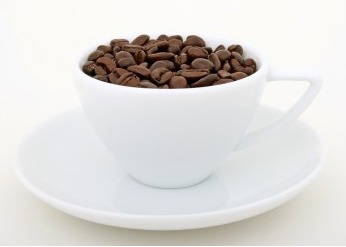The relationship between consciousness Fine Coffee, Common sense Coffee and Crema
During the roasting process, a large amount of carbon dioxide is produced in the coffee beans, most of which will be emitted during the cooling process, and a small amount will remain inside. Grinding will release these gases, so coffee must be made as soon as possible after grinding.
When hot water hits the coffee powder under high pressure, it will emulsify the insoluble oils of the coffee powder, and at the same time it will dissolve a large amount of carbon dioxide in a supersaturated manner, which is much greater than the solubility of hot water under normal pressure. This is why countless fine bubbles appear immediately when the liquid flows from the handle. But that doesn't explain Crema completely. Open a can of Coke and you'll see countless bubbles coming up, but they don't last.
To create a stable foam, we need some bubbles and some compounds to "wrap" the bubbles, making the bubble structure stable and elastic. The process of this chemical reaction can be thought of as the action of a surfactant. Unlike milk foam, which is done through protein eggs, coffee is done through a substance called "protein melanin." It is produced by a combination of chemical reactions during baking, a process that scientists do not know much about. Protein and melanin are not hydrophilic substances, so when hot water hits, they naturally distribute on the surface of the bubble, so they can contact more air, thus creating countless tiny bubbles, so we have-foam. There is also something else-fat, which often destroys the foam structure (think about it, when we make cakes, we must remove the egg yolk, otherwise the fat in the egg yolk will lead to the failure of the egg white.)
So will the oil in the coffee cause crema to disappear quickly within minutes? The answer is either right or wrong. Surfactants dissolve in water, and gravity pulls them off the surface of the foam along with the water, making the foam fragile, elastic, and quickly disappearing. The rate at which foam disappears is related to the rate at which water is pulled away, but a properly brewed cup of coffee lasts longer on the surface of the foam than a fast-brewed cup because the liquid is stronger than a fast-brewed coffee, as evidenced by our taste.
The 15-second espresso usually has a whiter crema because it's lighter. Coffee powder is water quenched for a shorter time, and the viscosity of coffee is lower than that of 25 seconds. For the same reason, coffee brewed at a lower water temperature will also be weaker, because it does not have enough energy to dissolve the substances in the coffee (it should be that the solubility of the lower water temperature is low, not the so-called energy). This also explains why over-quenching can lead to dark, charred crema.

Important Notice :
前街咖啡 FrontStreet Coffee has moved to new addredd:
FrontStreet Coffee Address: 315,Donghua East Road,GuangZhou
Tel:020 38364473
- Prev

Roasting degree resolution chart of roasting knowledge of high-quality coffee beans
The above color is only for reference to distinguish according to the roasting degree of each country, which is also the earliest distinction of roasting degree of coffee. Because the roasting degree of coffee varies from country to region, it is known as roasting degree by country or region, such as Italian roasting, French roasting and so on. However, the baking degree of these different preferences are integrated and arranged from shallow to deep to form the baking degree.
- Next

Introduction to the main Coffee producing countries in the World
JAVA Market name: Blawan, Jampit. KENYA: Kiambu, Thika, Ruiru, Meru, Embu, Kisii. Market name: Kenyas, Nairobi. Madagascar (MADAGASCAR) producing areas: North West, Central East, South East. Market name: Madagascarian. Mexico (MEXIC
Related
- Beginners will see the "Coffee pull flower" guide!
- What is the difference between ice blog purified milk and ordinary milk coffee?
- Why is the Philippines the largest producer of crops in Liberia?
- For coffee extraction, should the fine powder be retained?
- How does extracted espresso fill pressed powder? How much strength does it take to press the powder?
- How to make jasmine cold extract coffee? Is the jasmine + latte good?
- Will this little toy really make the coffee taste better? How does Lily Drip affect coffee extraction?
- Will the action of slapping the filter cup also affect coffee extraction?
- What's the difference between powder-to-water ratio and powder-to-liquid ratio?
- What is the Ethiopian local species? What does it have to do with Heirloom native species?

